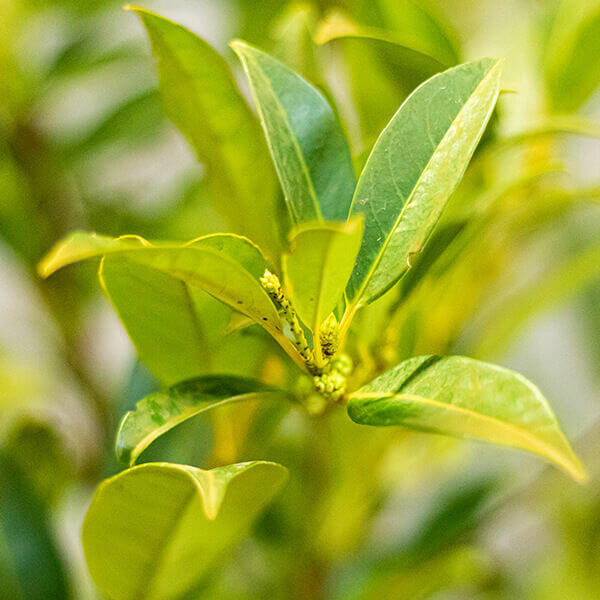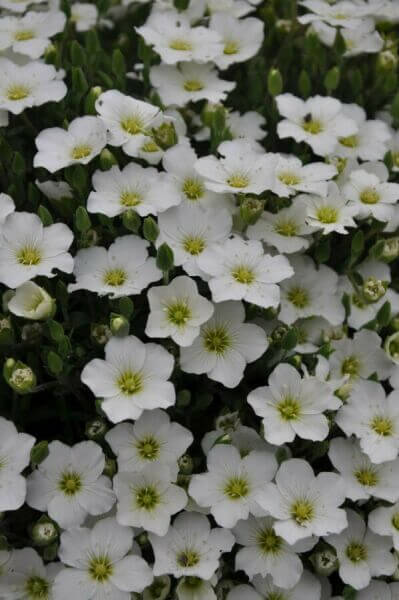Hedge Plants For Seaside Gardens
Hedge Plants For Seaside Gardens
Blog Article
Hedge Plants For Noise Reduction
Boost your garden's allure with lavish hedge varieties such as Yew (Taxus), Thuja, Laurel, Photinia, and Bamboo, celebrated for their structural stability and environmental benefits.
Yew and Thuja supply evergreen protection and winter durability, while Laurel offers fast growth and broad, fragrant leaves.
Photinia includes seasonal charm with its lively red foliage, and Bamboo lends a low-maintenance, peaceful ambiance.
These hedges improve air quality, lower noise, and develop tranquil, private areas.
Correct planting, spacing, and maintenance guarantee energetic growth and environmental consistency.
Explore how these lush varieties can raise your garden's appeal and well-being.
Key Takeaways
Change Your Garden With Lush Hedge Varieties
- Select Yew for its thick, evergreen development and unrivaled durability.
- Go with Laurel for its fast growth and broad leaves, guaranteeing fast privacy.
- Pick Photinia for its lively seasonal foliage, which turns a striking dark red.
- Utilize Bamboo for a low-maintenance, winter-hardy hedge with aesthetic appeal.
- Space plants 2-3 per meter and prune routinely for ideal development and health.
Popular Hedge Plants
When changing a garden with lavish hedge ranges, it's vital to consider popular hedge plants such as Yew, Thuja, Laurel, and Photinia due to their unique qualities and benefits.
Yew (Taxus) is highly esteemed for its longevity and thick, green development, making it a prime option for sustaining landscapes.
Thuja is kept in mind for its evergreen foliage and robust winter season durability.
Photinia adds seasonal vibrancy with red leaves that darken in time, creating dynamic visual appeal.
Laurel offers quick development and aromatic, broad leaves, suitable for quick personal privacy.
In Addition, Bamboo is an excellent choice for ambiance, offering a low-maintenance, winter-hardy option that enhances the garden's visual with its classy, swaying walking sticks.
These selections cater to a range of horticultural needs and preferences.
Advantages of Garden Hedges
Garden hedges provide a wide range of advantages, making them an important addition to any landscape. These natural barriers are affordable to implement and supply considerable wind protection, boosting air flow and contributing to noise decrease. The dense foliage of hedges like Thuja and Beech makes sure privacy by blocking exposure, creating a serene and remote environment.
Hedges also play a crucial role in microclimate guideline, offering a steady environment that fosters plant development and minimizes temperature variations. Their elaborate leaf structures filter toxins, improving air quality and adding to a much healthier garden ecosystem.
Furthermore, hedges master noise reduction, soaking up and deflecting acoustic waves to lower ambient noise levels. This dual performance of supplying both visual and acoustic privacy boosts the total tranquility and aesthetic appeal of any garden.
Planting and Maintenance Tips
For an effective hedge, careful preparation of the planting location is crucial. Ensure the soil has appropriate pH and drain to support strong root advancement.
Area the plants properly for the picked types. Water the hedge frequently during its initial growth phase, adjusting as needed with seasonal changes.
Implement a systematic pest control and disease prevention strategy, utilizing chemical or organic treatments when needed. Routinely examine for aphids, termites, and fungal infections.
Apply mulch to keep moisture and suppress weeds. Seasonal pruning promotes dense development and air blood circulation, necessary for plant health.
Following these standards will assist you cultivate a dynamic, properly maintained hedge that boosts the charm of your garden.
Spacing and Trimming Guidelines
Spacing and Cutting Standards
Appropriate spacing and trimming are crucial for cultivating healthy, aesthetically appealing hedges. Sufficient spacing guarantees each plant receives enough nutrients, light, and air flow.
Follow these guidelines for optimum hedge upkeep:
- Spacing: Position hedge plants 2-3 plants per meter to encourage robust development.
- Pruning Strategies: Regular pruning is essential for keeping preferred hedge height and shape. Trim brand-new development in summertime and cut down older wood during winter.
- Seasonal Care: Change trimming techniques and schedules according to seasonal requirements to make sure plant health.
- Hedge Height: Routinely monitor and cut to maintain the preferred hedge height and achieve consistent visual appeals.
Following these actions will ensure your hedge prospers, enhancing both the appeal and functionality of your garden.
Picking the Right Hedge
Selecting the Right Hedge
Picking the appropriate hedge involves examining factors such as mature height, foliage density, and ecological resilience. Successful hedge plant choice needs understanding each species' development attributes and site-specific versatility.
For instance, Yew (Taxus) offers outstanding durability and thick growth, while Thuja is notable for its winter durability. In addition, thinking about maintenance requirements is crucial; fast-growing species like Laurel or Privet demand regular cutting, whereas low-maintenance choices like Bamboo or Ivy might be more suitable for those looking for very little maintenance.
Ecological aspects such as soil type, light schedule, and wetness conditions need to likewise assist the choice procedure. This careful approach ensures the chosen hedges will thrive, providing both aesthetic and practical advantages to the garden landscape.
Delivery and Planting Guidance
To ensure your hedge plants thrive, they should be provided by specialized carriers and planted immediately upon arrival.
Follow these vital steps for successful planting:
- Soil Preparation: Improve the soil with raw material to improve drainage and nutrient material.
- Planting Depth: Develop a trench twice the width and equal to the depth of the root ball.
- Watering Strategies: Water completely after planting, keeping the soil consistently wet however not saturated.
- Mulching: Use a layer of mulch to keep moisture and reduce weeds.
Client Assistance and Service
Provided the important role of prompt help in horticultural pursuits, our client support team is readily available 6 days a week through telephone, email, and social networks to provide expert suggestions and quickly address any issues. Their dedication to quick reaction times ensures client fulfillment by dealing with questions related to plant health, optimum planting methods, and upkeep schedules.

-------------------
Telephone
This extensive support group, enhanced by an outstanding 9.3/ 10 customer rating, highlights our dedication to enhancing the gardening experience for every single client.
Frequently Asked Concerns
How Long Does It Consider Hedge Plants to Establish?
Hedge plants normally require one to 3 years to become completely established, with the precise period varying by types and growing conditions.
Effective care during this critical period is necessary for robust growth. Constant watering, alert weed control, and appropriate fertilizer application are essential in promoting strong root development.
For example, fast-growing types like Laurel might establish more rapidly, while slower-growing ranges such as Yew might take longer. Persistent upkeep speeds up the establishment process, leading to thick and healthy hedges.
What Are the Best Hedge Plants for Personal Privacy?
The concern of the finest hedge plants for privacy involves assessing evergreen and deciduous alternatives.
Evergreen hedges like Thuja, Laurel, and Cypress provide year-round coverage, guaranteeing constant privacy.
In contrast, deciduous hedges such as Beech use seasonal personal privacy, shedding leaves in colder months.
Key maintenance suggestions for personal privacy hedges consist of routine cutting, fertilizing in spring, and proper spacing-- generally 2 to 3 plants per meter.
Furthermore, constant watering and diligent weed removal are crucial for promoting healthy, dense growth.
Can Hedge Plants Attract Wildlife to My Garden?
Yes, hedge plants can get more info attract wildlife to your garden by offering vital benefits like shelter, food, and nesting websites, thereby improving local biodiversity. Yew, holly, and laurel are outstanding for attracting birds, while ivy supports a range of pests.
Nevertheless, it is essential to note that there are some downsides, such as increased upkeep to manage pests and routine maintenance. Carefully selecting and preserving hedge varieties can help stabilize these advantages and downsides, eventually cultivating a lively and sustainable ecosystem in your garden.
Exist Any Blooming Hedge Plants Available?
Yes, there are flowering hedge plants offered that can enhance the appeal of your garden.
For example, Elaeagnus, likewise understood as Olive Willow, produces fragrant white flowers in the fall, including a touch of beauty.
Photinia, another popular option, showcases dynamic red leaves that grow into a rich green, creating a dynamic visual result throughout the seasons.
To guarantee these plants grow, it's vital to practice proper pruning methods and seasonal upkeep, such as trimming brand-new growth in the summertime and cutting down in the winter.
These steps will assist maintain the health and visual appeal of your blooming hedges.
How Do I Prevent Insects in My Hedge Plants?
To avoid bugs in hedge plants, employ natural bug control methods and maintain appropriate hedge care. Present beneficial bugs like ladybugs, which victimize harmful pests, to produce a well balanced environment.
Frequently examine your hedges for signs of invasion and promptly remove any affected parts to prevent the spread. Guarantee the health of your hedges by using well balanced fertilizers and supplying appropriate water.
Make use of mulching to maintain soil wetness and correct spacing to minimize plant tension and promote robust development. These practices jointly assist in decreasing bug concerns and keeping a healthy hedge.
Conclusion
In essence, picking the ideal hedge ranges such as Yew, Thuja, and Laurel can change any garden into a relaxing haven. These plants provide year-round greenery, enhance visual appeal, and deal practical benefits like noise decrease and wind defense.
Appropriate planting methods, accurate spacing, constant watering, and seasonal cutting are crucial for ideal growth.
Dependable delivery services and skilled client support make sure a smooth experience from purchase to planting, making it simpler than ever to raise your outside space.
Garden hedges use a plethora of benefits, making them an important addition to any landscape. These natural barriers are economical to execute and supply considerable wind protection, boosting air flow and contributing to sound reduction. The thick foliage of hedges like Thuja and Beech guarantees personal privacy by obstructing presence, producing a serene and remote environment.

Pruning Strategies: Routine pruning is necessary for keeping preferred hedge height and shape. Trim new development in summer season and cut back older wood throughout winter.
Report this page